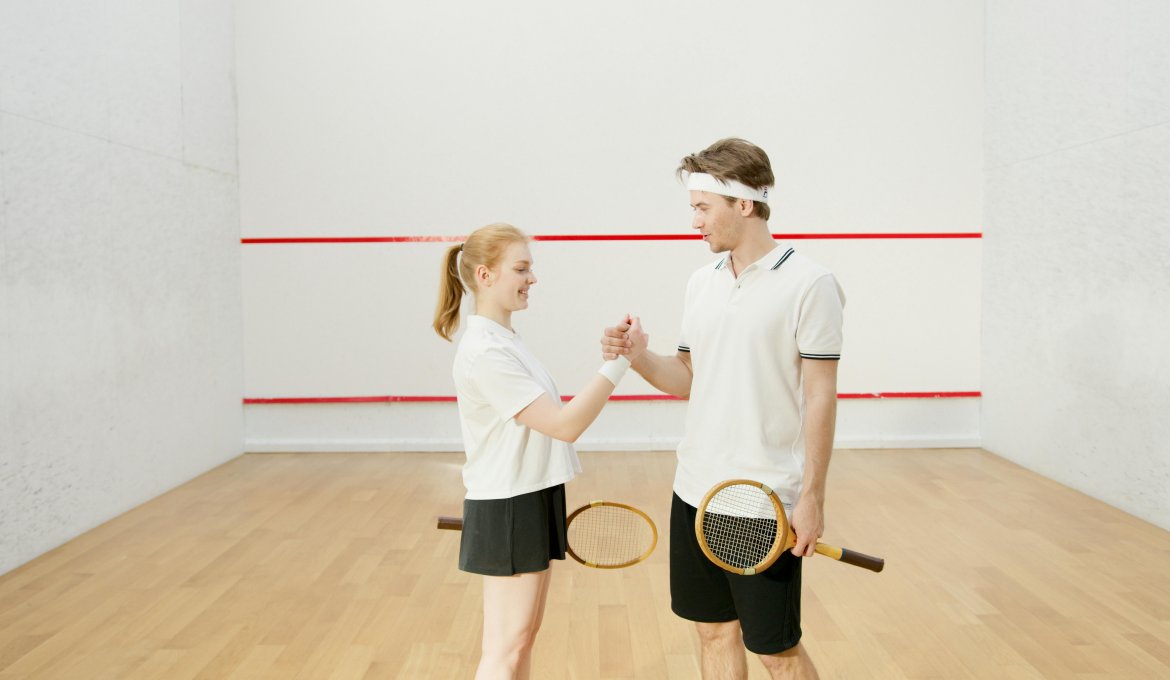 Business
Business
How to open your own squash court? Prices and tips
Starting a squash club in Poland can be a smart move. Interest in racket sports grows every year, and modern cities crave active spaces. The path from idea to first match is not short, yet it is very doable with a clear plan. In this guide you get practical numbers, field insights, and lessons learned from real projects. You will see how to pick a site, how much to budget, how to work with a court builder, and how to launch with momentum. I keep the tone optimistic and the advice concrete, so you can move fast and avoid common traps.
Market demand in poland and site selection
Start with the catchment area. In Polish cities a solid base often forms within a 10 to 15 km radius or 25 minutes by car or tram. Map residents, large employers, universities, and gyms with no courts. Then check competing venues. Count courts, prices, peak time slots, and waiting lists. If nearby clubs show 60 percent plus occupancy on weekday evenings, the market can take more supply. Visit in person. Talk to players at reception. Ask what they miss. You get honest answers.
Look for a site with clear height of at least 6 meters for comfortable construction and ventilation. A rectangular footprint helps lay courts side by side. Parking and public transport matter in Poland’s larger cities. A location near offices pulls lunch and after work traffic. Estates with young families produce weekend bookings. Warehouse conversions work well due to volume and cost. New shells in mixed use projects also shine if rent is right. Run a simple scorecard that rates access, height, utilities, noise risk, and rent per square meter. It keeps emotions in check and supports your bank case.
Budget and realistic prices from plan to first match
Plan your capital spend in layers. For a standard single court delivered and installed, expect 220,000 to 350,000 PLN net depending on brand, wall system, glass, and options. That covers front and side walls, the glass back, a certified floor, lines, and a tin. Add building adaptation. In a leased warehouse, fit out may reach 1,800 to 3,000 PLN per square meter for partitions, showers, electrical, lighting, acoustics, and HVAC. New build shells can run 3,000 to 5,500 PLN per square meter if you create everything from scratch.
Per court allowances that I see in Poland:
- HVAC with heat recovery 60,000 to 120,000 PLN
- LED lighting for 500 to 750 lux 10,000 to 25,000 PLN
- Acoustic treatment 10,000 to 30,000 PLN
- Access control and booking hardware 8,000 to 20,000 PLN
A three court club in a leased unit often lands at 1.8 to 3.0 million PLN net. A five court layout ranges 3.0 to 5.5 million PLN net. Add 10 to 15 percent contingency. Operating spend in year one includes rent at 40 to 80 PLN per square meter, utilities at 12 to 25 PLN per square meter, staff at 40,000 to 80,000 PLN per month, marketing at 5,000 to 15,000 PLN, and service of 2,000 to 6,000 PLN per court per year. Price peak hours at 90 to 140 PLN and off peak at 50 to 80 PLN. At 4 courts, 100 opening hours per week, and 50 percent occupancy with an 85 PLN blended rate, you get about 73,000 PLN monthly court revenue. Add coaching, memberships, leagues, and shop to reach 95,000 to 120,000 PLN. Sensitivity tests before signing the lease save nerves later.
Choosing a court builder and comparing proposals
Your choice of squash court manufacturer will set the tone for quality, timelines, and warranty support. Ask for World Squash Federation compliant systems and a list of Polish or EU references you can visit. Good partners show full technical drawings, assembly timelines, and a safety file. They also explain the care routine and stock spare parts in the EU. Invite two or three suppliers to a structured request for proposal. Keep the scope identical. List wall type, glass spec, door hardware, floor species and thickness, line markings, tin height, lighting level, and delivery time.
Compare more than price. Review acoustic performance, impact strength, and repair options for front walls. Ask which elements are replaceable without opening the entire court. Check who does the installation. In Poland a local crew trained by the producer is a plus for warranty speed. Make sure the payment plan follows milestones. Reserve a holdback until final acceptance. Include response times for defects in season. If your future plan includes a show court or mobile glass court for events, ask now about compatibility. A strong supplier can support your PR and opening campaign with visuals, case studies, and even demo days. That adds trust in a new market.
Design and technology that players will notice
Players feel quality right away. They notice the true bounce, even lighting, and clean air. Decide early between plastered walls and prefabricated panel systems. Panels give consistent rebounds and faster repairs. Plaster is cheaper upfront, yet needs more care on the front wall. For floors, choose a sprung beech or maple system with proper deflection and friction. The wrong surface causes injuries and poor reviews. Use LED fixtures that deliver uniform light on the ball and do not cast harsh shadows. Aim for 500 to 750 lux at floor level with good glare control.
Plan ventilation and cooling per court, not only for the hall. Heat and humidity rise fast during peak blocks. Heat recovery units with variable speed fans lower bills. Acoustic baffles above courts reduce echo and protect neighbors. Glass backs should be toughened, 12 mm, with certified fittings and soft close hardware. For layout, leave clear viewing corridors and a social zone by the reception. Add two changing rooms, a small gym or stretching area, and a pro corner with grips and eyewear. Smart tech matters too. A booking system with online payments, access gates, and court sensors makes daily ops smooth and lowers staffing at slow hours.
Permits, standards and compliance in poland
Polish rules are clear, yet timelines vary by city. If you change structure or use, engage an architect to assess whether you need a building permit or a notification. Fire safety, smoke extraction, and evacuation paths must meet current codes. You will also prepare as built documentation for occupancy. Courts should follow World Squash Federation dimensions and line markings. Ask your court supplier for compliance declarations. For accessibility, plan step free entries, wider doors, and one accessible changing room. Add clear signage and contrasting strips on glass doors.
Plan water treatment for showers and regular legionella checks. Noise control is sensitive in mixed use buildings, so obtain an acoustic expert opinion. Insurance companies ask for certified glazing and documented maintenance. On the tax side, many clubs apply an 8 percent VAT rate to sport services, yet court rental classification can vary. Speak with a Polish tax advisor before you lock the model. Data protection applies to CCTV and booking data. Prepare privacy notices and access rules. Staff must pass health and safety training and basic first aid. Before opening, schedule technical inspections for electrical, HVAC, and pressure systems if installed. A clean handover file makes future audits painless.
Revenue model, pricing and early traction
Your price list should steer demand into shoulder hours and protect peak. Keep a lean matrix. Set peak on weekday evenings and late afternoons, off peak before 16:00 and weekends before noon. Offer packs of 5 or 10 hours with a light discount. Sell founding memberships in pre sale. Early bird cards bring cash for final fit out and build a core group that fills ladders and leagues. Corporate passes work well near business hubs. Schools and universities fill daytime slots at a lower rate but give long contracts.
Mix revenue streams:
- Court time with dynamic pricing on busy days
- Coaching with revenue share and junior programs
- Leagues, ladders, box leagues, and monthly tournaments
- Pro shop with grips, balls, eyewear, and stringing
- Room rental for events and team building
Track utilization by day and hour, average revenue per court hour, and customer acquisition cost. A simple break even view helps the team. Monthly fixed costs divided by gross margin per hour gives required hours sold. Keep the team focused on hitting that mark. In projects I advised, fast growth comes from a visible opening campaign, weekly social nights, and one flagship event within the first two months. Use your court supplier’s network for PR. Many will share your launch on their channels and introduce media.
Operations, maintenance and risk management
Simple routines keep the playing quality high and bills low. Vacuum and dust courts daily. Wipe glass backs to remove sweat marks. Inspect door closers, hinges, and handle gaskets weekly. Check floor grip with a clean damp mop and approved cleaner. Schedule front wall touch ups when ball marks build up. Plan annual service with your installer. Floors may need sanding and resealing every three to five years depending on use. Keep spare glass door fittings and a pane on standby if space allows. Downtime hurts most in peak season.
Energy savings add up. Use LED with motion profiles for off peak. Fit variable speed fans and heat recovery. If the roof allows, consider a small PV array to cover base load. Use zoned HVAC control per court. Noise control matters too. Add acoustic panels above courts and soft finishes in corridors. For risk, buy liability cover, property and equipment cover, and business interruption. Train staff in first aid, AED use, and evacuation. Prepare incident forms and a simple safety checklist for opening and closing shifts. A modern booking and access system lowers shrinkage and lets you run low staff during quiet hours. Keep your promises on response times. Players reward reliability with repeat bookings and five star reviews.
Opening a squash venue in Poland is a rewarding project. With a realistic budget, a trustworthy squash court manufacturer, and a sharp launch plan, you can deliver great sport, a bustling community, and a healthy business. Start small if needed, keep listening to players, and grow with demand.






